
Really. And: Dating apps with the best success
| WAHT DOES DATING MEAN TO A GUY | 361 |
| Dating app raises money | 393 |
| HERMAPHRODITE IN SAN JOSE LOCAL DATING | 206 |
What Makes Asia's Top Dating Apps Successful
When it comes to dating apps, Tinder leads the pack, topping the App Store’s Lifestyle category in 87 markets. Now, local apps are changing the game, sometimes even outperforming global leaders.
The trend rings true in Asia, where Korean dating apps Amanda, NoonDate andI-UM all rank among the top revenue generators in our 2015 Retrospective. Additionally, Japan’sPairs, China’s Momo, and Singapore’s Paktor all showcase unique features that appeal to local bachelors and bachelorettes.
Their success has been driven by catering to local tastes. Below, we look at some popular local dating apps across Asia and the reasons why they’re doing so well.
South Korea: Exclusivity, Restriction and Confidentiality Are Key
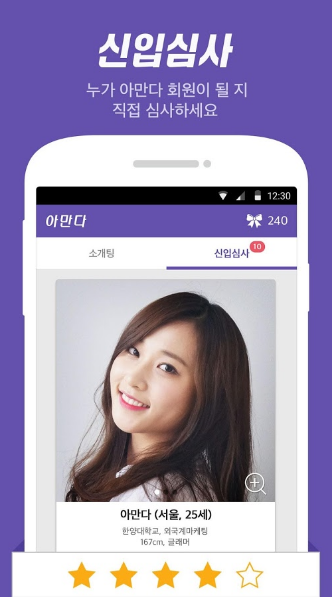
Existing users can rate new members in Amanda. Only approved members can join the service.
One of South Korea’s favorite dating apps, Amanda, attracts users through its unique exclusivity — new members can only join after existing members approve them. This selectivity drove demand as it prompted users to prove themselves worthy of joining the app. The high-quality pool also motivates users to spend a fortune. New users set their desired characteristics and the app recommends others who match the preferences and have given the new user a high score. Knowing that someone scored you highly makes it irresistible to make an in-app purchase to discover who they are. Consequently, Amanda has ranked as a top-earning app in South Korea, staying within the top four in iOS’s Social Networking category and the top three among Social apps on Google Play for the past three months.
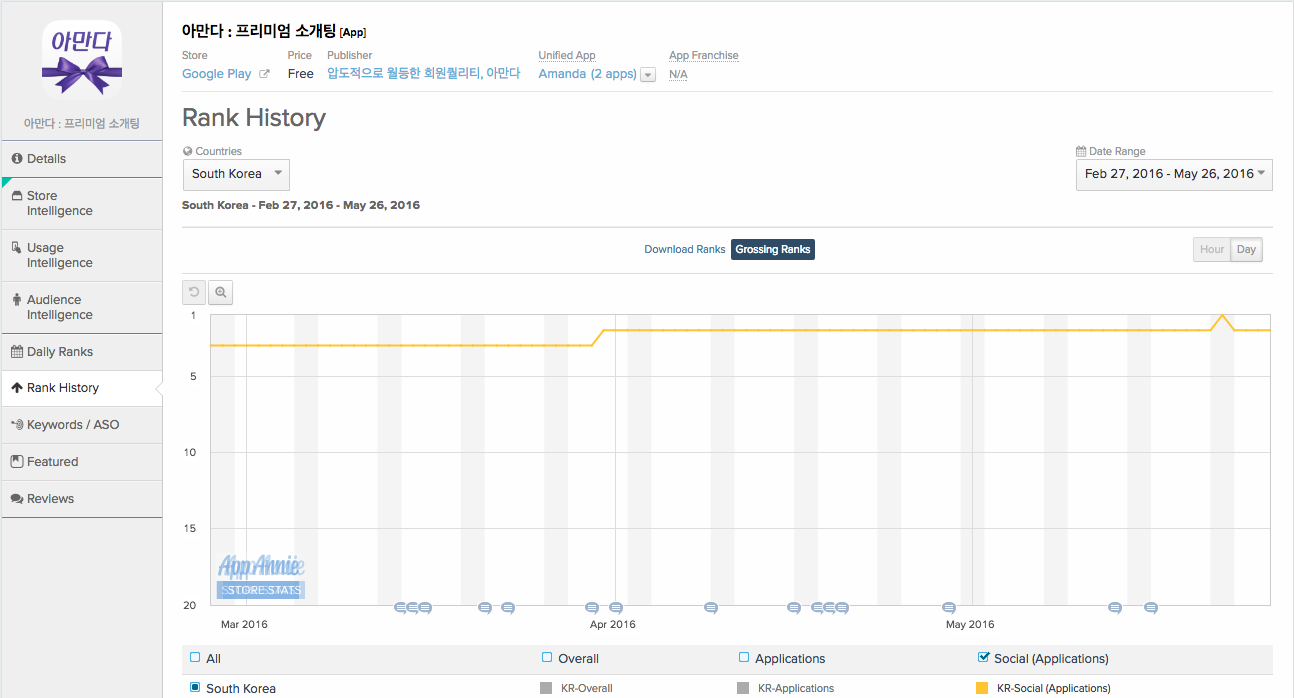
Amanda has been one of South Korea’s top-earning Social apps since February.
Other major dating apps in South Korea such as NoonDate, I-UM and You and I focus on limiting access to the user pool. NoonDate recommends two people in the user’s current or chosen location at noon every day, while I-UM introduces two people twice a day. Similarly, You and I allows users to view up to 16 profiles and choose one winner.
Viewing limitations seem to be a revenue driver as these apps are the top-grossing apps in the Social app category. Since February, NoonDate and I-UM have both ranked in the top 10 on Google Play by revenue, while You and I reached the top 15.
These apps are very careful about revealing users’ identities and contact information. Amanda took an extra step to ensure anonymity by adding a feature that excludes acquaintances based on a user’s phone contacts. Amanda added this feature so the app would resonate with local users, as dating apps are still not yet widely accepted in Korean culture.
Japanese Dating Apps Offer Couples More Value
Dating services have been popular in Japan since the early 2000s. Now, they are becoming more diverse as publishers try to create suites of apps that follow couples throughout their relationship journey.
For example, Pairs, one of the country’s most popular dating apps, has a Tinder-like user interface, but users can search for potential partners by filtering for hobbies (like sports) and interests (like favorite movies). Its publisher Eureka, which was acquired by IAC last year, offers another app called Couples which helps couples manage their schedules and record memorable events. Through these two apps, Eureka aims to retain users after they find a partner.
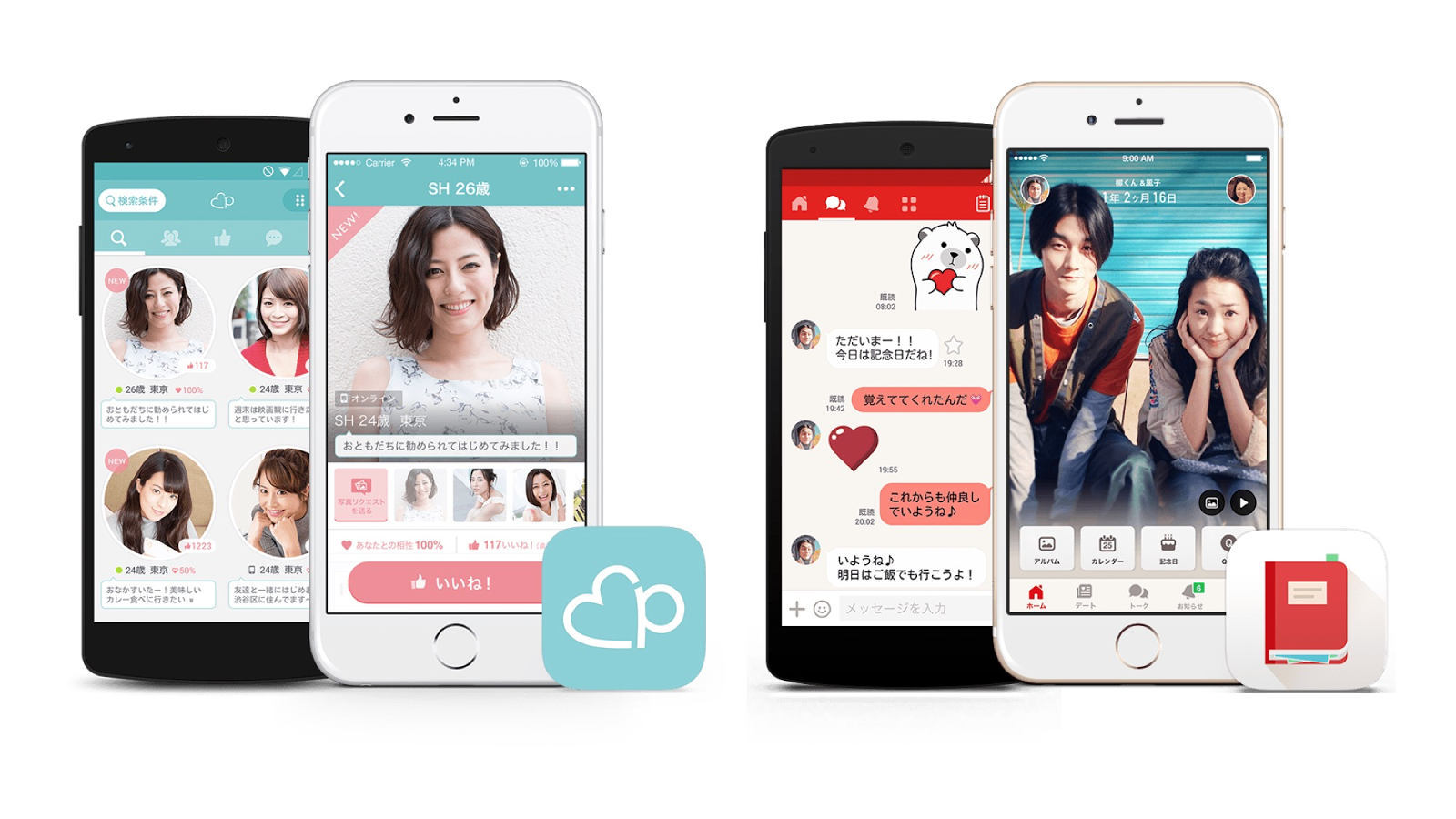
Once you find your partner in Pairs, Couples can help you record memorable events with them.
While Eureka started with dating apps and expanded its offerings by launching Couples, Recruit Holdings started out the opposite way: expanding from its wedding business into dating apps. Its service, Zexy, has over 20 years of history as a popular wedding media service, which it extended to its dating app called Zexy Koimusubi (Koimusubi means love-matching in Japanese). Its user interface and matching system are similar to other dating apps, but Zexy’s strong, established brand helped it become a popular dating app in Japan.
China’s Dating Apps Leverage Local Trends
Momo has been one of China’s leading dating apps since 2011. The location-based dating app pushed out several innovative features over the years to keep its user base engaged, including in-app sticker purchases and local meetups. Recently, it added a live broadcasting feature at a time when video streaming is gaining popularity in Asia.
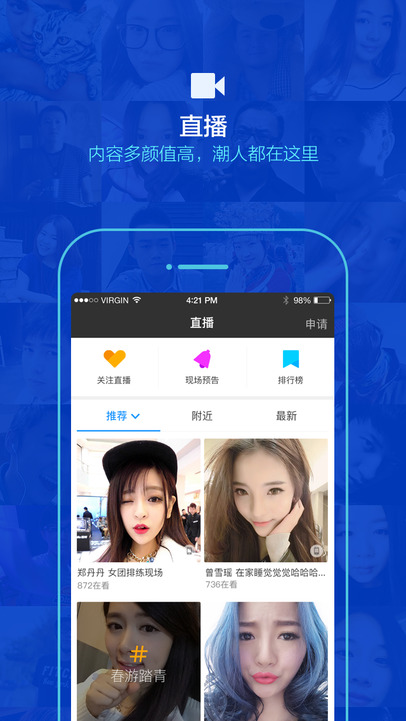
Momo recently added a new live broadcasting feature.
Another notable dating app in China is Tantan, which borrows from Tinder’s swiping mechanic. Since its 2014 launch, the app climbed into China’s top 10 iOS Social Networking apps. Tantan’s publisher has attempted to attract new users to the app by sponsoring reality TV programs. Those efforts may have paid off judging by its 2.5 million active users and $32 million USD funding round in May 2016.
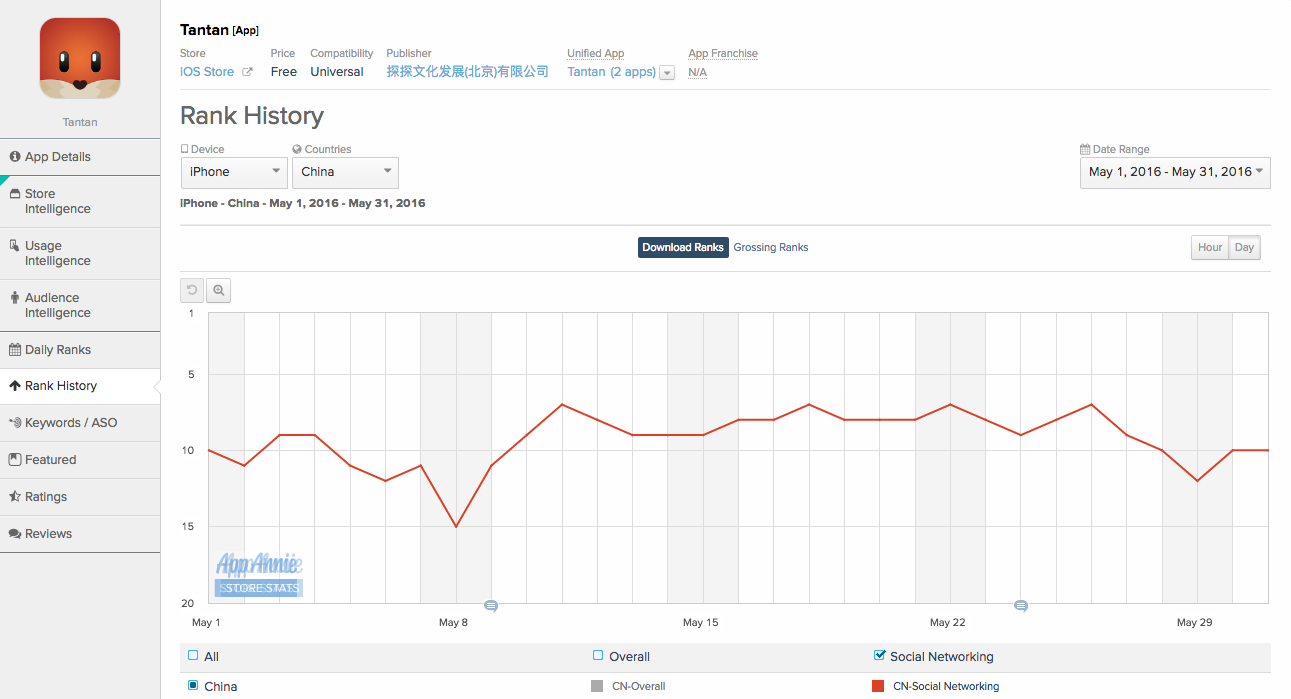
Tantan has consistently been one of China’s top 15 Social Networking apps on iOS since May 2016.
Singapore’s Paktor Captures Hearts in Taiwan
Some dating apps have been able to find success outside of their home market, like Singapore’s Paktor.
The social dating platform has been fairly successful in monetizing its users both locally in Singapore and abroad in Taiwan with its freemium model. With premium filters that allow users to choose dates based on factors like education, height or location, this app remained within the top five grossing ranks in Google Play’s Lifestyle category in both Taiwan and Singapore from early March 2015 to June 2016.
Similar to China’s Momo, Paktor focuses less on romance and more on social networking. This approach seems to work better in Asia given how casual dating is less common.
Paktorreceived funding in March 2016 from an Indonesian media conglomerate, signaling its expansion strategy into surrounding markets in the Asia-Pacific region.
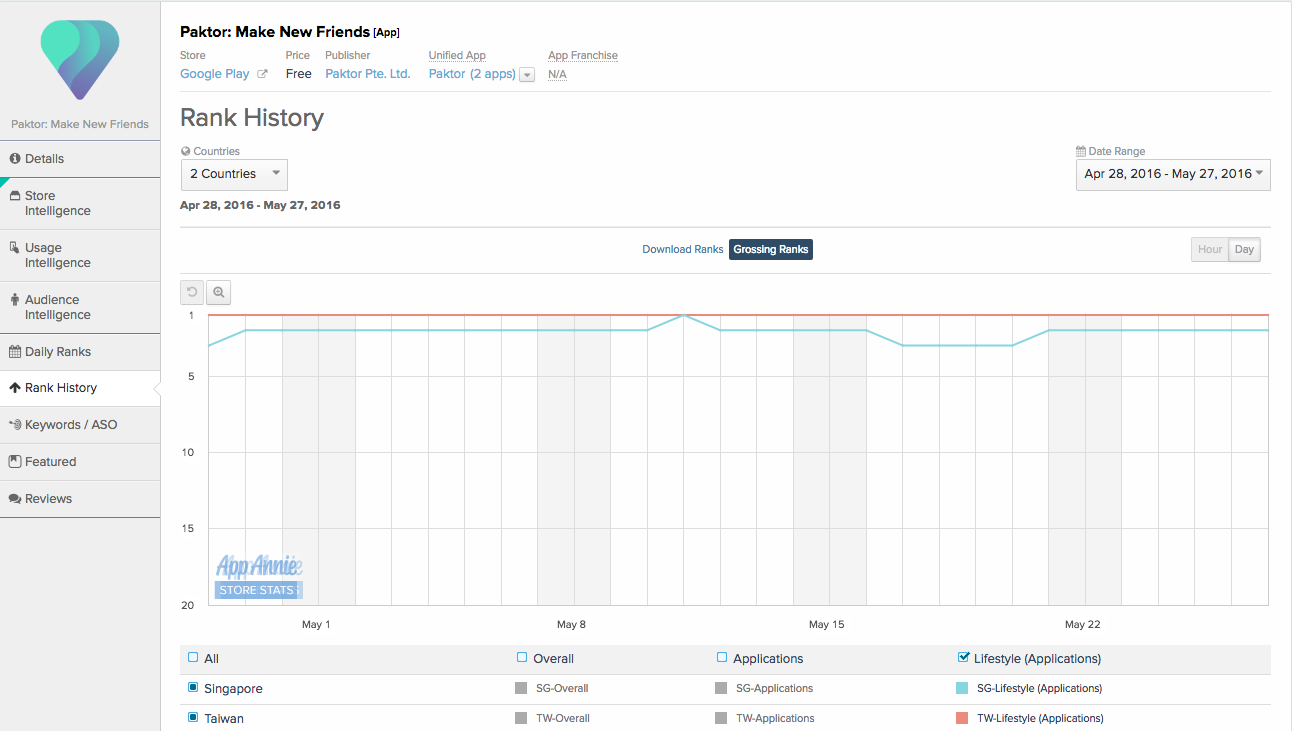
Paktor maintained its top-three revenue position in Google Play’s Lifestyle category during May in Singapore and Taiwan. Similar to China’s Momo, Paktor focuses more on social networking features, which works better in Asia.
Making Dating Apps for Local Cultures
If you’re making an app targeting Asia’s dating population, adapting to local culture is key to succeeding — and generating long-term revenue.
Don’t take features for granted — what worked in your home market might not catch on when you expand into Asia. Worse, it might actually turn off more socially conservative markets. Think about the local culture when deploying and marketing your app by interviewing users and looking at other top apps on Store Stats.
Développez le business de vos applis
Abonnez-vous pour recevoir d'autres analyses sur le marché des apps, l'actualités des conférences et des guides. Vous avez quelque chose à ajouter ? Postez vos questions et commentaires sur Twitter.
Vous avez des objectifs ambitieux pour votre app business ? Créez un compte gratuit pour explorer Store Stats en détail ou demandez une démonstration d'Intelligence.

0 thoughts to “Dating apps with the best success”